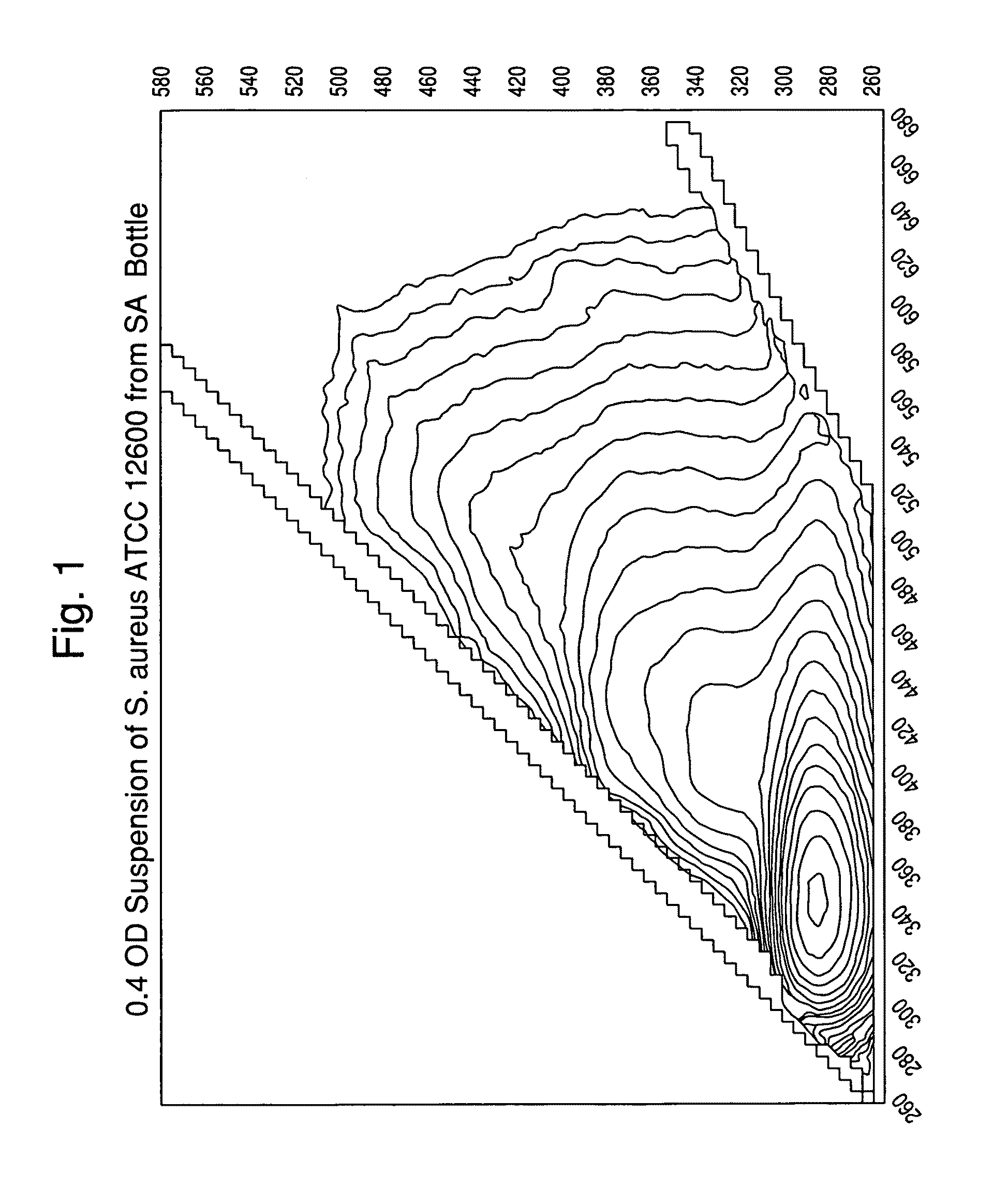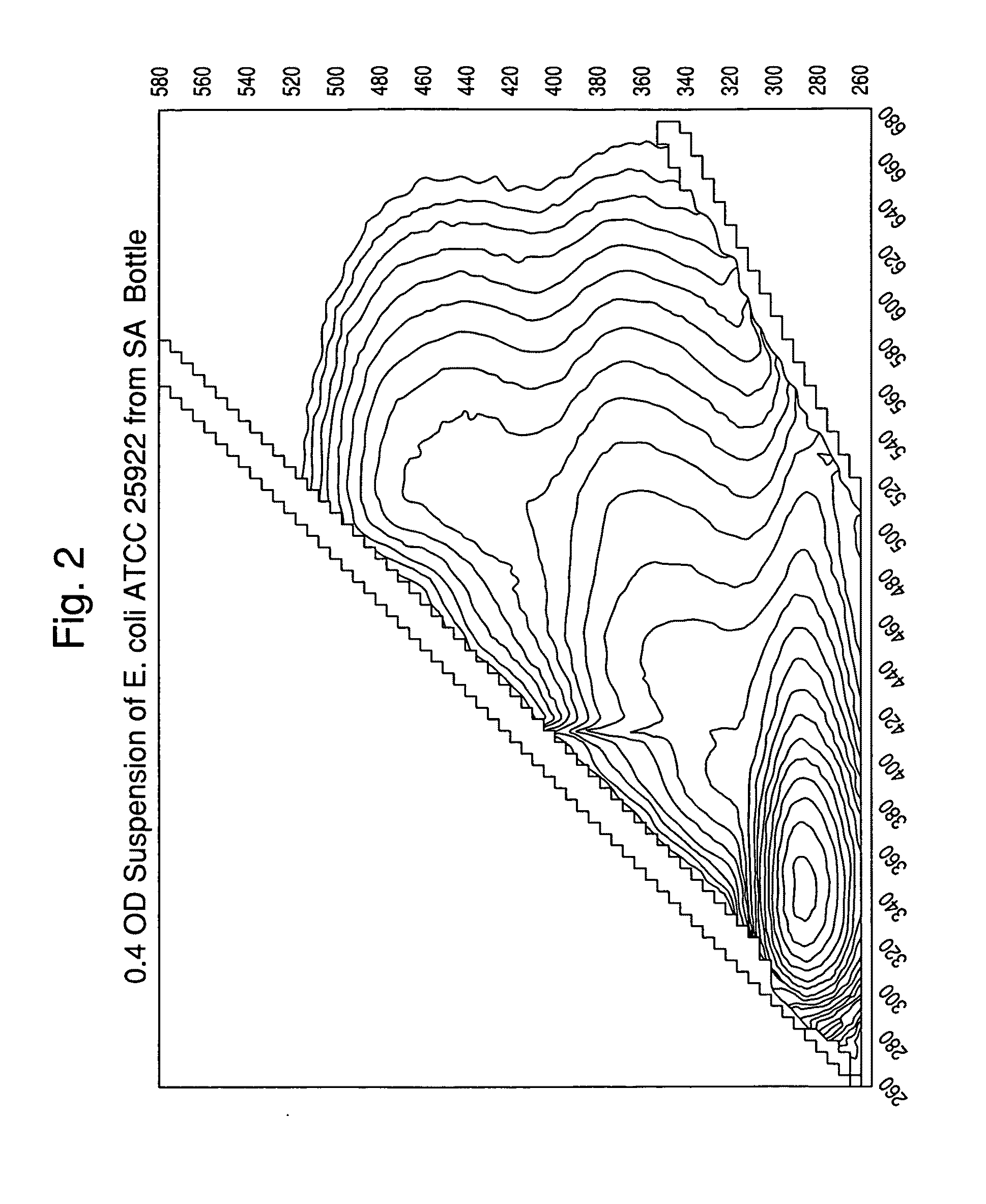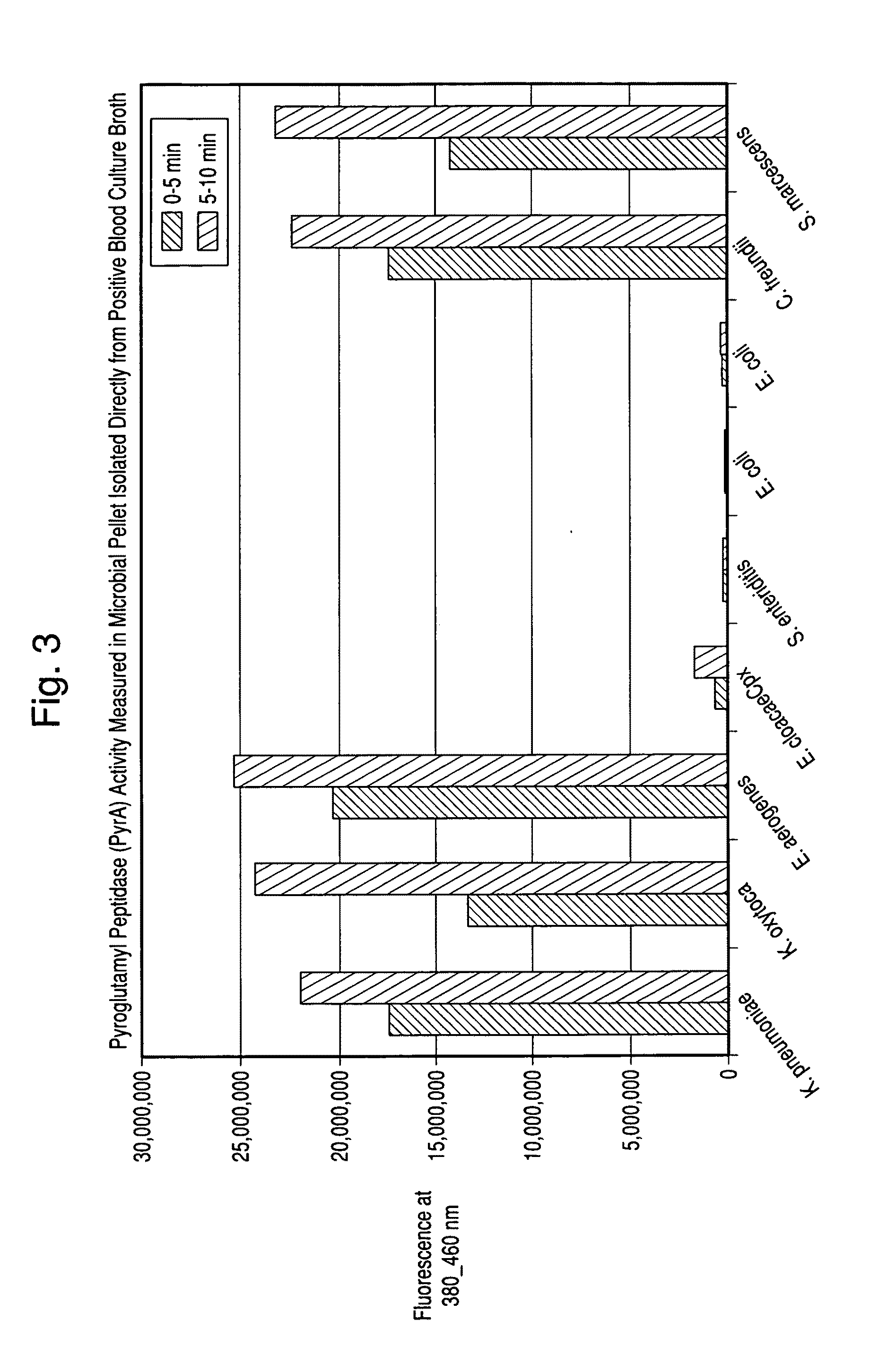Method for separation and characterization of microorganisms using identifier agents
- Summary
- Abstract
- Description
- Claims
- Application Information
AI Technical Summary
Benefits of technology
Problems solved by technology
Method used
Image
Examples
example 1
Rapid Microbial Isolation and Identification Method
[0092]A suspension of colloidal silica (0.2-0.5 mL; 1.040-1.050 gm / mL density) was added to several conical microcentrifuge tubes. Lysed positive BacT / ALERT® SA blood culture broth samples (0.5-1.0 mL) were overlaid onto the colloidal silica suspension. Alternatively, the colloidal silica solution can be added underneath the lysed blood culture broth using a needle or canula. Positive broth from cultures containing the following microorganisms were tested:[0093]E. coli, ATCC 25922[0094]E. faecalis, ATCC 29212[0095]S. aureus, ATCC 12600[0096]P. aeruginosa, ATCC 10145
[0097]The tubes were capped, and then spun in a microcentrifuge for 2 min at about 10,000 g at room temperature (20-25° C.). The supernatants were aspirated, then the purified microbial pellets were resuspended in 0.45% w / v NaCl to an optical density @ 660 nm of 0.40.
[0098]One portion of each suspension was transferred to an acrylic cuvette and scanned in a spectrofluorim...
example 2
EDTA in Lysis Buffer as an Identifier Agent
[0100]Many lysis buffers, particularly those used for molecular methods, contain chelating agents such as EDTA to assist in the solubilization step. We assessed the impact of adding EDTA to the TX100-CAPS lysis buffer base using a panel of Gram-negative and Gram-positive microorganisms. Table 1 shows the rapid inhibitory effect of EDTA on P. aeruginosa and A. baumanii, but not on two other Gram-negative rods, B. cepacia and K. pneumoniae, or the Gram-positive S. aureus. Note that while EDTA was inhibitory to both P. aeruginosa and A. baumanii, the changes in major intrinsic fluorophores were very different between these two species. P. aeruginosa was the only organism tested that had a significant drop in both NADH and tryptophan fluorescence following EDTA treatment.
[0101]These experiments represents a good example of how certain additives or identifiers can be added to the lysis buffer to rapidly alter the base microbial intrinsic fluores...
example 3
Rapid In Situ Microbial Enzyme Assay
[0102]Several closely-related members of the Enterobacteraciae family can be differentiated by the presence or absence of an enzyme known as pyroglutamyl peptidase. For example, E. aerogenes is positive while E. cloacae is negative; C. freundii is positive and E. coli is negative.
[0103]To test for microbial pyroglutamyl peptidase (Pyr A), positive blood culture broth were treated as follows:[0104]1. A 2.0 mL sample of positive broth was mixed with 1.0 mL of selective lysis buffer (0.45% w / v Brij® 97+0.3 M CAPS, pH 11.7), and then placed in a 37° C. water bath for 1 minute.[0105]2. A 1.0 mL sample of lysate was overlayed onto 0.5 mL of density cushion (24% w / v cesium chloride+10 mM Hepes ph 7.4+0.005% Pluronic F-108) supplemented with 300 ug / mL L-pyroglutamic-acid-7AMC, contained in a custom-built optical separation tube. A polypropylene ball was present on the surface of the density cushion to facilitate loading without disturbing the two aqueous ...
PUM
| Property | Measurement | Unit |
|---|---|---|
| Angle | aaaaa | aaaaa |
| Electrical resistance | aaaaa | aaaaa |
| Selectivity | aaaaa | aaaaa |
Abstract
Description
Claims
Application Information
 Login to View More
Login to View More - R&D
- Intellectual Property
- Life Sciences
- Materials
- Tech Scout
- Unparalleled Data Quality
- Higher Quality Content
- 60% Fewer Hallucinations
Browse by: Latest US Patents, China's latest patents, Technical Efficacy Thesaurus, Application Domain, Technology Topic, Popular Technical Reports.
© 2025 PatSnap. All rights reserved.Legal|Privacy policy|Modern Slavery Act Transparency Statement|Sitemap|About US| Contact US: help@patsnap.com



